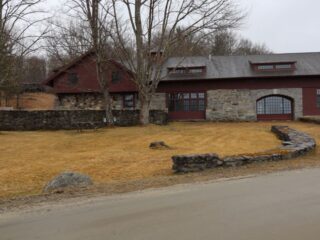by Angela Corrias
In Sardinia the guest is sacred.
This is the first thing visitors notice, and in my hometown, Ghilarza, there is no exception.
Nestled between the lake Omodeo, once the biggest artificial basin in Europe, and the basaltic plateau of the Guilcer, this cozy hamlet lies in the very heart of the big island. Here, everyone knows each other, and animals still have right of way. Manners and traditions blend exquisitely, and I can’t help but be amused at tourists, taken aback when children wave at them. It’s not a mere indication of politeness; it’s an ancestral manifestation of the desire to make guests feel important.
As I stroll around Ghilarza and watch my childhood places with the foreign eye I have acquired during my years abroad, so I smile. Very little has changed, and although some modern shops have sprung up, their displays hardly spoil the village-like attitude. Shop owners stand at the door chatting away with passers-by and with each other, exchanging valuable pieces of information about the next event that will shake the tranquil life of the community, be it a festival or a wedding.
Lined up along the narrow side streets are little houses made of huge moss-flecked stones with wooden doors that give the town an exquisite old-fashioned look, so much that the cars parked outside seem almost anachronistic. Throughout the town, the influence of various foreign occupations is apparent, which, along with the abundance of basaltic stones, gives Ghilarza an architecturally eclectic appearance. Each historical reign has left its own imprint, creating a harmonious collaboration of Pisan, Aragonese and Spanish styles.
Every time I return to Ghilarza from a trip overseas, I am not only enchanted by the little town, but I’m also struck by the surrounding Sardinian wilderness. With a surface of 24,000 square kilometers and a little more than a million and a half inhabitants, the island has the lowest population density among all Italian regions.
From the train, heading northwards on my way home from Elmas airport, I stare at the changing environment, from the tidy meadows of the south to the endless sweeps of rough vegetation inland, to the protected macchia mediterranea, inhabited by all sort of wildfowl and fragrant with untamed myrtle. This makes for a land apart, where the forbidding, rock-strewn landscape is only refined in part by seldom, well-plowed fields.
Sandy shores, suddenly interrupted by dramatic outcroppings that loom over the turquoise sea, and savage woodlands dotted with nuraghi, towers constructed during the Bronze Age, give the impression that the modern world hasn’t entirely arrived to this island yet. It is clear, however, that the towns and villages scattered around Sardinia have a profound sense of the ancient world.
Ghilarza’s territory boasts some 3,000 years of civilization under its collective belt, evident in the presence of two nuraghi, a giants’ tomb, a sacred well, and other sites waiting to be brought to light. A realm of shepherds and farmers, the town is a lively, developed area and, like in ancient times, a central hub for nearby villages.
Despite Ghilarza’s richness in historic benchmarks, what attracts much interest is a pastel-coloured, two-story house on Corso Umberto, the town’s main road. Of simple architecture, this modest building is the adored residence of one of Italy’s most appreciated Marxist thinkers: Antonio Gramsci.
“Educate yourself, as we will need all our intelligence,” he said when Fascism was at the doorstep. Today this message is carved out of the basaltic rock that dominates the little piazza named after him, as if to impress on our minds the significance of his words.
Gramsci’s family moved to Ghilarza in 1897, when he was six years old. The town today probably looks about the same as when he dawdled about its tangle of narrow streets, surrounded by the pristine countryside clothed with olive trees, Mediterranean lentiscus, and cork oaks.
Walking down the main road, from my house to the church, I came to the old town, Gramsci’s town, where the true spirit of the ancient Sardinia captured me: simple, genuine, intentionally laid-back. Even during his most dire hours, Gramsci reflected the lighthearted attitude of his native village.
From the fascist prison he wrote to his mother:
Thank you for the money you sent me. I purposely bought a slice of Christmas panettone to eat it as if it was sent directly by you. Of course, I would much prefer a dish of culurzones [typical Sardinian ravioli] like those of tiu Franziscu Frore.
The culinary traditions of Ghilarza, so enjoyed by Gramsci, have retained much of their old ingredients. It is still not uncommon here for women to make their own bread, cheese, pasta, and sauces, using home-grown farm products, typical cheeses, local undergrowth vegetables such as wild asparagus and freshly made pasta.
The content of Gramsci’s letters, so typical of Ghilarza, inevitably reminds me of when, as a child on my way home from school, crossing the green gardens of the council and pressing on to the main road, I could smell the typical scent of tomato sauce. Every day, from noon on, Ghilarza is permeated by the smell of homemade delicacies, immersing the village in an early afternoon drowsiness. When the clock strikes one, the town falls into silence; the ritual of the meal is still very much honored.
Quite austere, and poorly decorated, Gramsci’s house is now a museum, and sadly, only a bedroom is kept as it was when his family lived there, trading Gramsci’s past for modern tourism and sacrificing the house’s unique character. It seems like it has lost its original spirit, I complained to Diddi Paulesu, daughter of one of Gramsci’s sisters and the only member of the family who still lives in Ghilarza.
“It did, alas! Visitors would have been able to better understand my uncle’s remarks, if the house had stayed as it was when he lived here,” she insisted.
Besides the single bedroom, only an unnaturally tidy collection of Gramsci’s personal belongings remains in the house. They represent his life from the time he went to school, to the day he was elected Member of Parliament, to the day public prosecutor, Michele Isgro, brutally ended the trial launched against him, declaring, “We have to prevent this mind from working for twenty years.”
What these items can’t convey are the memories and stories of Gramsci’s life that Diddi treasures and clings onto. Diddi and her sister Mimma, as well as their mother, Teresina, have shared their family’s tales with countless tourists and academics who have come to see where the philosopher grew up.
They describe how in the old days everyone worked hard to make ends meet, and in Gramsci’s house the women used to make their way to bed late at night, after a day of sewing and ironing: They went up the stairs all together in a single file behind Peppina [Diddi’s grandmother] who held high the paraffin lamp, wrote Mimma, echoing her mother’s memories.
“It was very cold,” recalled Diddi almost with nostalgia, “to the extent that Grandma used to place the milk in the room with the water well, using it as a primordial fridge.”
These accounts of Diddi and Mimma, my familiarity with Gramsci’s own writings, as well as my frequent pilgrimages to casa Gramsci, have all made me feel that, unconsciously, I grew up with an inner Gramscian legacy.
His character has been involved in many milestones of my life journey: my education started in the primary school named after him, his ideas echoed during all anniversaries of Italian freedom against Fascism and, last but not least, my first published article appeared in the newspaper he founded seventy-seven years before.
However, I am aware that, as Gramsci’s niece, Diddi is truly my only bond with the great philosopher. When she was born in 1929, her uncle, zio Nino, had been in fascist jail for already two years. She never personally met him, but thanks to her mother’s tales, she’s the only one who can give me an authentic glimpse at Gramsci’s relation with our hometown.
“How many beautiful memories I have from zio Angelo’s house!” burst out Diddi during one of her nostalgic moments.
My heart started racing. I had to make sure I had understood. “Who is uncle Angelo?” I asked her.
“He’s your grandfather!” was her prompt reply. “We always hung out in your house when we were children!”
This revelation was definitely beyond my expectations. I do not have enough evidence to support my hopes that Gramsci had spent happy days of his childhood in the house where I grew up, but Diddi’s memories and the mention of zio Agostino’s mill in Gramsci’s letters somehow appeased my curiosity. Zio Agostino was my grandfather’s well-heeled uncle. Privileged owner of a windmill, in 1870 he built the residence that is now my home.
Though it is impossible to know exactly how deeply Antonio Gramsci was involved in my personal family history, his troubled life and untimely death have undoubtedly transformed him into a legend that deeply permeates the history of Ghilarza and well as my own story.
Gramsci appreciated the culture, and especially the cuisine of Ghilarza, and as time presses on, the town admirably resists the prevailing waves of globalization in order to preserve this beloved identity. “Sometimes too much,” complains my friend Caterina, barely hiding a hint of pride, “but at least we know we can still trust each other.” It is this trust that allows the neighborhood children to continue waving to strangers, and allows Diddi to continue to share her invaluable accounts of Gramsci’s life.
Like every village on the island, Ghilarza bears many hidden gems, most of them imperceptible to the amateurish eye of a first-time traveler. However, the preserved values and welcoming nature of the village allows visitors to discover the authentic charm of this ageless land.








